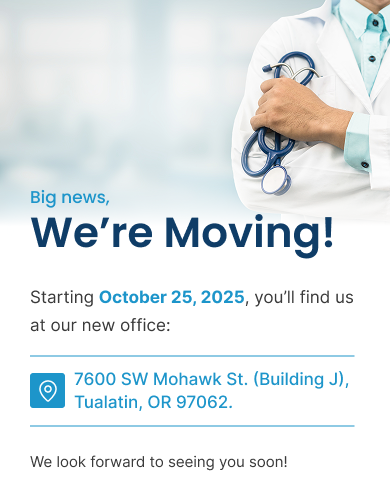Front of Ankle Pain: Causes & Treatments

Pain in the front of the ankle or along the inner arch of the foot can be frustrating, especially if it keeps you from walking, running, or exercising comfortably. Whether you’re feeling inner arch foot pain, experiencing a sore tibialis anterior, or noticing tenderness in the tendon in front of the ankle, it’s important to understand what’s causing the discomfort and how to treat it.
This guide covers common causes of inner side of foot pain, tibialis anterior tendonitis, and arch problems, with practical ways to manage symptoms and strengthen your feet.
Inner Arch and Medial Foot Pain
One of the most common complaints is pain on inside of foot or pain on inside of foot above arch. This discomfort often points to issues in the inner longitudinal arch, where ligaments and tendons provide support.
Why Do My Arches Hurt?
People often ask this when dealing with medial arch pain. The most frequent reasons include:
Flat feet or fallen arches
Overuse during running or standing for long hours
Poor footwear support
Inflammation of the plantar fascia or tendons
If you notice pain on inner side of foot near arch, rolling a tennis ball under your foot may provide temporary relief—but if pain in arch when rolling tennis ball in both feet continues, it’s a sign of deeper strain.
How to Cure Arch Pain
Treatment often involves stretching, strengthening, and using supportive shoes or insoles. Consistency is key to addressing foot inner discomfort and preventing chronic issues.
Tibialis Anterior Pain and Tendon Issues
Another frequent source of front ankle pain is the tibialis anterior muscle, which runs down the shin and connects to the top of the foot. It plays a crucial role in lifting the foot while walking or running.
Common Conditions
Tibialis anterior pain: General soreness or aching.
Tibialis anterior tendonitis: Inflammation from overuse, often leading to swelling and tenderness.
Tibialis anterior muscle pain: Can extend up toward the knee.
Strain tibialis anterior muscle: Caused by overstretching or sudden movements.
Anterior tendonitis or strained anterior tibialis: Specific inflammation at the tendon near the ankle.
Tibialis anterior pain near knee: Sometimes pain radiates upward along the shin.
Symptoms to Watch
Tightness in the muscle front of ankle
Tendon pain in front of ankle when walking
Sore tendon front of ankle after exercise
Discomfort during running, often labeled as tibialis anterior pain running
If left untreated, this can progress into an anterior tibialis muscle tear or long-term tibialis muscle strain.
Tendons in the Foot: Images and Injuries
Visuals often help patients understand where pain originates. Looking at foot anatomy images or a picture of tendons in foot makes it easier to locate the problem.
Tendons in the foot images show how many small structures keep the arch stable.
Torn tendon in foot pictures or top foot torn tendon in foot pictures reveal what damage looks like and why rest is important.
These visuals highlight the delicate balance of tendons and ligaments that can be disrupted by overuse or injury.
Treatment for Tibialis Anterior Problems
If you’re experiencing tibialis anterior tendonitis, there are several treatment options:
Tibialis Anterior Tendonitis Treatment
Rest and modify activity to reduce stress on the tendon.
Ice therapy to manage swelling.
Stretching and strengthening exercises for shin and ankle.
Supportive footwear or braces to stabilize the anterior ankle tendons.
Tibialis Anterior Pain Treatment
If pain persists, physical therapy may include manual techniques, resistance band exercises, and gait training to reduce pressure on the tendon.
Addressing tight tibialis anterior through stretching can also help restore normal mobility.
Exercises and Stretches for Relief
Movement is essential for recovery. Consider these exercises to ease inner arch foot pain and strengthen the ankle:
Calf stretches to reduce tension in the arch.
Toe raises to activate the anterior ankle tendons.
Balance training to stabilize the arch and ankle.
Foam rolling along the shin to ease a tight tibialis anterior.
Adding these to your routine helps reduce inner longitudinal arch pain and prevent further tibialis anterior tendon pain.
When to Seek Help
See a doctor or physical therapist if you notice:
Persistent inner side of foot pain that doesn’t improve with rest.
Swelling or bruising along the tendon in front of ankle.
Sharp pain suggesting a tibialis anterior muscle tear.
Difficulty walking due to sore tendon front of ankle.
Early evaluation can prevent a minor strain from becoming a chronic problem.
Final Thoughts
Front of ankle pain can come from multiple sources, from medial arch pain to tibialis anterior tendonitis. Paying attention to your symptoms—whether it’s pain on inside of foot above arch, tendon pain in front of ankle, or a strained anterior tibialis—helps you take the right steps toward recovery.
By using proper footwear, practicing stretches, and strengthening both arches and shin muscles, you can learn how to cure arch pain, relieve discomfort, and keep moving without limitations.


